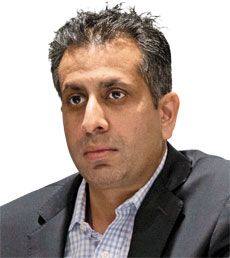Pharm Exec's 2014 Dealmakers Outlook
After fading to dreary summer stock for the past few years, dealmaking is today back to center stage, but with the major roles reversed- small biotech, yesterday’s understudy, now gets top billing, while big Pharma has to work harder for its close-up.
After fading to dreary summer stock for the past few years, dealmaking is today back to center stage, but with the major roles reversed- small biotech, yesterday’s understudy, now gets top billing, while big Pharma has to work harder for its close-up.
Pharm Exec brought partner Campbell Alliance and a select group of West Coast dealmakers to a Sonoma raceway for a test performance on what lies ahead for asset licensing and M&A activity in 2014. Despite all the high-octane rhetoric around deals, the key differentiator of success hasn’t much changed. It’s still that hard-and honestly wrought–evidence of value to payers and patients.
Below are the responses of Neel Patel, Director, Campbell Alliance. Excerpts from the full morning’s of discussion with all the dealmakers can be found here.

Neel Patel
Campbell Alliance has conducted its Survey of Dealmaker Intentions for six years, one of the most volatile periods in memory. What has been distinctive about the past 12 months and how is this weighing on the current business calculations of pharma companies and the host of new partners in this space?
Neel Patel, Campbell Alliance: As far as expectations for activity over the next 12 months are concerned, there is a solid if nuanced convergence around expectations for an increase in the overall volume of deals.
Significantly, both out-licensors and in-licensors expect more deals at the early preclinical stage and carrying forward to Phase II clinical trials. At Phase III, there are tempered expectations for deals versus early stage assets.
For fully marketed assets, both groups are largely aligned, this time in anticipation that the number of deals will decline. The expectations on marketed assets represent a reversal in sentiment from our last survey, when respondents were expecting an increase in deals. Driving this is the growing confidence among biotech firms in being able to commercialize independently-conditions are more conducive to making that final sprint to the finish line, without any push from big Pharma.
Which therapeutic areas are attracting the most interest among dealmakers this year?NP: There is relatively little change-oncology assets are by far the top draw; this has been the case since we began the Survey. Both buyers and sellers are committed to signing deals in oncology, which is to be expected, as this is where the science is trending, too.
What is interesting this year is the therapeutic category we call “Other.” Interest is scaling up in this category, which includes mainly orphan drug assets for a growing list of rare diseases. “Other” also includes ophthalmology drugs, which is a favorite for the high pricing flexibility these give to investors. Overall, virtually every company we surveyed-from the biotech start-up to the big Pharma top 10-now includes orphan drugs as part of its business development and licensing strategy.
Financing trends.
NP: Over the last two years, our Survey has seen a significant increase in structured asset transactions built around contingent value rights, leveraged through a “earn out” clause. The “earn out” is a useful way of establishing a contingent value for an asset, which is attractive to companies that want to quantify their risk exposure by tying payment to a goal or an event that has to happen. If you believe we will continue to see a buoyant capital market, then it will be interesting if the availability of funds trumps the necessity for sellers to negotiate these “earn outs.”
Big Pharma remains the biggest buyer, with the deepest pockets, yet we see much more turmoil in the way they manage their pipeline portfolio and therapeutic franchises.
NP: This is true. We see a clear pattern here: a promising compound fails in Phase III and all of a sudden management decides to exit that entire therapeutic area. Every asset in that zone is declared persona non grata, even though the company might have spent many millions in acquiring the assets and even entire companies, seeking a position of leadership. And we are not even considering the churn in management ranks, where there is an innate tendency for newcomers to do the opposite of what their predecessors did.
There seems to be uncertainty about who will be driving the financing for the next generation of biopharmaceutical innovations.
NP: Nevertheless, options for small companies with good assets to go it alone are improving. They are holding on to these longer than in prior years. We are now being asked to help licensors develop their portfolio strategy, which was rare just two years ago. Biotechs see the potential of remaining independent, with multiple assets that can be developed without necessarily selling out to big Pharma. We are also seeing a more nuanced approach to the footprint companies make in each therapeutic area; there is a lot more “slicing and dicing” of assets, geared to obtaining a very focused market profile that buyers can understand.
Novo Nordisk, The United Laboratories Ink Exclusive License Agreement for Triple Receptor Agonist
March 25th 2025Under terms of the license agreement, Novo Nordisk will acquire the rights to develop and commercialize UBT251 outside of China for obesity and type 2 diabetes for an upfront payment of $200 million.